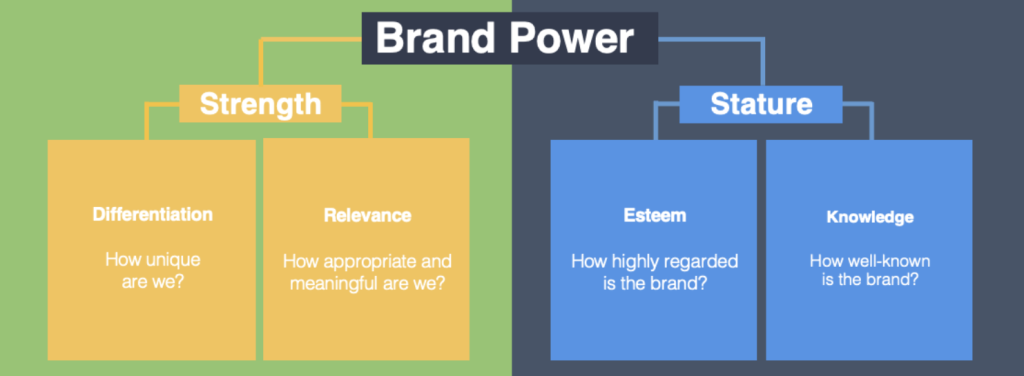How to measure your B2B brand strength
You might think your brand is powerful, but how can you be sure? Do you have a method for tracking it over time to effectively manage it?
As a B2B marketer focusing on a niche, brand management falls under your responsibility. Everyone aims for a strong, iconic brand, like Apple or Amazon (for the record, when exploring inspirational brands in brand projects, these two are always banned from the list!), but determining your brand’s strength and assessing the impact of your efforts to steward it can be challenging.
So, how can you evaluate your brand’s strength and chart a course to enhance it further?
One approach we advocate is using the Y&R Brand Asset model, a simple yet powerful tool for gauging brand strength. We pose questions directly to customers through surveys, but also involve internal stakeholders, such as sales teams, across four crucial areas.
This allows us to compare internal perceptions and understand what the sales team believe the brand should represent (ideal) versus how they believe their audiences actually perceive it (reality).
We then compare these insights with the customers’ own perceptions using surveys and interviews, creating a comprehensive picture. This process guides us in making both internal and external improvements but also helps aid buy-in for brand development projects.
The model

The model assesses brand power through two dimensions: strength and stature.
Brand Strength
Within brand strength, two pillars are examined. The first delves into differentiation, exploring how unique the brand is compared to competitors and similar offerings. If your brand lacks distinctiveness and merely mimics others, its strength is compromised. This requires research to compare and benchmark against competitors.
The second pillar concerns relevance. Even if your brand is unique, it must also be relevant to your customer base and audience in order to establish genuine brand strength. It must appeal to their pain points and their priorities. Brands are perceptions, so a strong brand is never an irrelevant brand as they must matter to the audience.
Our team uses defined questions to explore these areas, often employing quantitative research complemented by qualitative interviews. This process yields a scoring mechanism to gauge current performance and chart the path forward.
Brand Stature
The second facet of the model revolves around brand stature, also encompassing two pillars.
The first pillar evaluates esteem, measuring how highly your brand is regarded compared to others. High regard and respect are indicators of a powerful brand, while a lack of esteem can undermine your brand’s strength — regardless of its uniqueness or differentiation. Esteem levels are significantly influenced by the experiences your audiences have when interacting with your team, products, and business.
The fourth and final pillar pertains to knowledge, essentially measuring how well-known your brand is and assessing your brand awareness. This aspect is crucial for benchmarking against competitors and understanding your level of recognition within your audience. After all, being unique, relevant, and highly regarded doesn’t matter if nobody has heard of your brand!
The model simplifies the assessment by assigning a score out of 10 for each of the four pillars, providing a clear framework for improving brand power. It’s not only easy to understand, but also easy to replicate.
It also uses a grid to help inform your next step to manage your brand, but the data within the pillars outline clear answers. We find it one of the most effective methods for measuring brand strength and evaluating the impact of brand activities — especially for B2B marketers targeting niche markets.
Is it time to calculate how powerful your brand is?
















